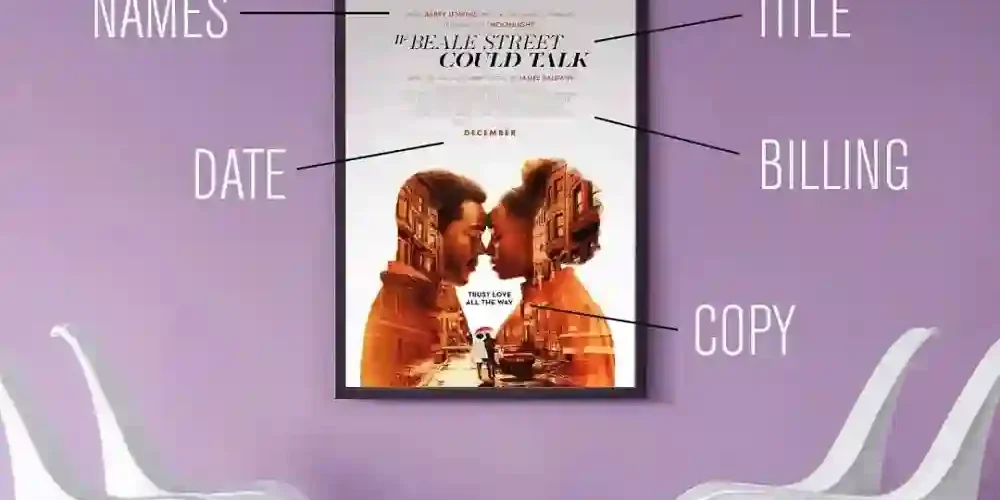Typography is more than just design—it’s a powerful communication tool. Among all the text elements in any visual medium, titles are the most prominent and impactful. They are the first thing viewers notice, setting the tone for the content and influencing engagement.
The choice of title fonts plays a critical role in ensuring that your message is clear, compelling, and visually striking.
This article explores why title fonts matter, how they shape perception, and practical tips for selecting the perfect typography to captivate your audience.
The Importance of Title Fonts
Titles are the focal point of any design. Whether it’s a blog post, a poster, or a presentation, titles attract attention and guide viewers to the content. The font used for these titles significantly affects how the message is received and understood. Here’s why title fonts matter:
1. Creating a Strong First Impression
First impressions are formed within seconds, and title fonts are often the first visual element a viewer interacts with. A well-chosen font can convey professionalism, creativity, or authority, while a poorly chosen one can deter interest.
2. Establishing Tone and Mood
Fonts communicate emotions and set the mood for the content. A bold, geometric font might signal innovation and confidence, while a cursive font suggests elegance or playfulness.
3. Guiding Viewer Attention
Title fonts serve as anchors that guide the viewer’s eyes to the most important information. They help establish a visual hierarchy, ensuring that the title stands out against other design elements.
4. Reinforcing Brand Identity
For businesses and creators, title fonts are an essential part of branding. Consistent typography builds recognition and trust, helping audiences associate the design with the brand.
Characteristics of Effective Title Fonts
Not all fonts are suitable for titles. Effective title fonts share specific characteristics that make them stand out and communicate effectively:
1. Legibility
A title font must be easy to read, even at a glance. Fonts with clean and distinct letterforms ensure that the message is understood instantly, regardless of size or viewing distance.
2. Visual Impact
Title fonts should grab attention without overwhelming the design. Fonts with bold strokes, unique shapes, or high contrast can create a memorable visual impression.
3. Adaptability
Good title fonts work well across different mediums and contexts, from large billboards to small social media graphics. They should maintain their readability and aesthetic appeal in all formats.
4. Stylistic Consistency
The font style should align with the overall theme and tone of the content. For instance, a futuristic sans-serif font may suit a tech event, while a classic serif font is better for a formal invitation.
Tips for Selecting the Right Title Fonts
Choosing the right font for a title can seem daunting, but following these tips can help you make informed decisions:
1. Understand Your Audience
Consider who you’re designing for. A younger audience may prefer modern, trendy fonts, while an older demographic might respond better to traditional, serif styles. Aligning the font with audience expectations enhances its effectiveness.
2. Match the Font to the Content’s Purpose
The font should complement the message and tone of the content. For example:
- Use sleek sans-serif fonts like Helvetica or Futura for corporate or minimalist designs.
- Choose decorative or script fonts like Lobster for creative or playful projects.
- Opt for serif fonts like Garamond or Baskerville for formal or academic content.
3. Consider Font Pairing
In some designs, you may need more than one font. Pairing a bold title font with a complementary body font creates visual contrast and hierarchy. Ensure that the fonts harmonize and don’t compete for attention.
4. Prioritize Readability Over Decoration
Avoid overly decorative fonts that may be hard to read. While such fonts can add flair, they should be used sparingly and only when readability isn’t compromised.
5. Test in Context
Always preview your font choices in the actual design context. A font that looks great on a blank screen might not work well with your chosen background, colors, or layout.
6. Use Contrast to Your Advantage
High contrast between the title font and the background enhances readability and ensures that the text stands out. Experiment with color combinations, shadows, or outlines to achieve the desired effect.
7. Stay Consistent with Branding
For businesses or personal brands, title fonts should align with the overall branding strategy. Consistency in typography helps reinforce brand identity and ensures cohesive visuals across all materials.
Popular Categories of Title Fonts
Different styles of fonts serve various purposes. Here’s a breakdown of popular categories and their ideal applications:
1. Serif Fonts
Serif fonts, with their small decorative strokes at the ends of letters, exude tradition, professionalism, and sophistication. Examples include Times New Roman, Georgia, and Baskerville.
- Best for: Print publications, academic content, and luxury brands.
2. Sans-Serif Fonts
Sans-serif fonts are clean, modern, and highly versatile. They lack the decorative strokes of serif fonts, making them ideal for minimalist and contemporary designs. Examples include Arial, Helvetica, and Open Sans.
- Best for: Digital media, corporate designs, and tech industries.
3. Script Fonts
Script fonts mimic handwriting or calligraphy, adding an elegant or whimsical touch. Examples include Pacifico, Lobster, and Brush Script.
- Best for: Creative projects, wedding invitations, and artistic content.
4. Display Fonts
Display fonts are designed to be attention-grabbing, often featuring bold or decorative letterforms. Examples include Bebas Neue, Impact, and Cooper Black.
- Best for: Posters, advertisements, and headlines.
5. Handwritten Fonts
Handwritten fonts provide a casual, personal feel. Examples include Indie Flower and Amatic SC.
- Best for: Informal designs, social media posts, and creative content.
Common Mistakes to Avoid
Even the best designs can be undermined by poor font choices. Avoid these common pitfalls when selecting title fonts:
- Using Too Many Fonts: Stick to one or two fonts to maintain a cohesive design.
- Choosing Overly Decorative Fonts: Avoid fonts that are hard to read or detract from the message.
- Ignoring Accessibility: Ensure that your font choices are legible for all viewers, including those with visual impairments.
- Neglecting Background Contrast: Always ensure that the title font stands out against the background.
Future Trends in Title Fonts
Typography continues to evolve, with new trends shaping the way we use title fonts. Here are some emerging trends to watch:
- Variable Fonts: These allow for dynamic adjustments in weight, width, and other attributes, offering greater flexibility and creative control.
- Retro-Inspired Fonts: Vintage and retro styles are making a comeback, adding nostalgia and charm to modern designs.
- Minimalist Typography: Simple, clean fonts remain popular, emphasizing clarity and sophistication.
Conclusion
Title fonts are a cornerstone of effective design, influencing how viewers perceive and engage with content. By carefully selecting fonts that align with your audience, message, and design goals, you can create titles that captivate and communicate with impact.
Whether you’re designing for digital media, print, or branding, the right title fonts can elevate your work, leaving a lasting impression on your audience. Take the time to experiment, refine, and perfect your typography choices, and watch your designs come to life.





